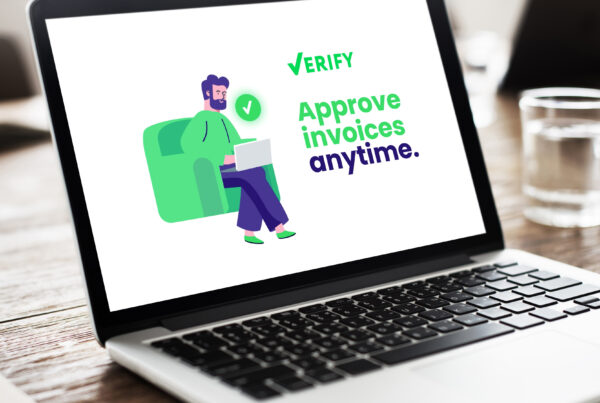The rate at which copies of supplier invoices are requested by some companies far exceeds the loss rate from external mail, whether sent through traditional post or email. This suggests many of these invoices are “missing in action” during the accounts payable process, rather than not received.
The accounts payable process starts with the receipt of an invoice and ends with the invoice approved and ready to pay on the accounting systems payables ledger. This blog explores why supplier invoices go missing in action during this process and examines how these losses can be eliminated.
Delivery
Over the last few years, there has been an increasing trend for invoices being received by email rather than the post, with estimates suggesting more than 70% of invoices are now received via email.
The Royal Mail reported, “The total number of complaints received in 2017/18 corresponded to 1 in 10,000 of the mail items we delivered”. This suggests a company processing 100,000 supplier invoices a year would only need to request 10 copy invoices due to invoices being lost in the post.
The trend towards email delivery indicates this is perceived as an even more reliable delivery system.
This is persuasive evidence that very few invoices get lost in transit between the supplier and the customer.
The problem at the delivery point is more likely to be the recipient. If suppliers are asked to send invoices to a wide range of recipients and locations, the risk of invoices getting lost internally increases. The solution to this problem is to send all invoices to the accounts payable department and log them in an invoice register.
Human touchpoints
An analysis of accounts payable processing in any business usually identifies many different human touchpoints for each invoice type after receipt. The transit between these touchpoints introduces an additional risk of loss.
These touchpoints usually involve checking the invoice against receiving documents and/or purchase orders and the coding and approval process. Each has varying degrees of complexity depending on the nature of the expenditure.
Each person’s inbox, whether of the traditional paper variety or its successor, the email inbox, often ends up cluttered with all sorts of mail, furthering the risk of loss.
The in-transit invoice is often in a paper form, whether as initially received or as a printout of an email attachment. It has been suggested that up to 90% of invoices received by email are printed out and sent around for approval. This method allows you to document the audit trail on the physical invoice. “Wet” signatures indicate who coded the invoice and who approved it.
Emailing the invoice round for approval has the advantage of the speed of delivery, particularly if you have multiple locations, but carries the risk of numerous copies of the invoice being in transit. If these all come back to the accounts payable department, there is the risk of duplicate payment or at least extra work to ensure you do not make further payments.
Suppliers who call asking about the payment status of an invoice often get the following response from the accounts payable department: ‘I will get back to you on that’. If there is no tracking mechanism in place, such as an invoice register, accounts payable have no visibility of where the invoice sits in the process. The response is often asking for another copy.
Maintaining an invoice register in a process with many touchpoints is cumbersome, and so only knowing that an invoice was received leads to the response “it is out for approval”.
Workaround
Moving to digital from paper can reduce the workload on tracking paper invoices. Working digitally and using a folder system for each touchpoint can introduce traceability.
You could use shared folders on a drive to implement this. Each participant can move the invoice from folder to folder as it goes through its particular checking, coding and approval route. The weakness of this approach is that there is no audit trail.
Using a document management system will remove the audit trail issue, as it allows you to see who has accessed and moved the document between each folder. This workaround still involves considerable human effort and discipline and is difficult to control when you have a large number of manual workflows and/or invoices.
Automate the process
Automating invoice processing will reduce the risk to the point of receipt of the invoice and eliminate invoices missing in action while being sent around for coding and approval.
All invoices are sent to a predefined email address, whether these are emailed directly by your suppliers or scanned in if sent physically through the post. Then relevant header data is captured from the invoices. The system routes the data and an image of the invoice for checking, coding and approval to the appropriate individuals. Finally, the approved data is automatically posted to the ledger.
Where an invoice sits in the process is visible to accounts payable, who can respond in real-time to supplier queries. This, together with faster processing, reduces the risk of the suppliers sending in additional copies. Furthermore, the software checks for duplicates and prevents adding these to the process.
There is a complete audit trail and the ability to search for data and invoice images during and after the completion of the process.
Conclusion
The impact of invoices missing in action is often a late and or unreliable payment record with suppliers that can affect the business adversely in several ways.
There is a strong case for eliminating the problem of invoices missing in action using accounts payable automation where there is a high volume of invoices or a complex checking and approval process.
Where volumes are lower and the process less complicated, some good housekeeping like centralised receipt of invoices and invoice tracking using workarounds can reduce the risk of loss.



